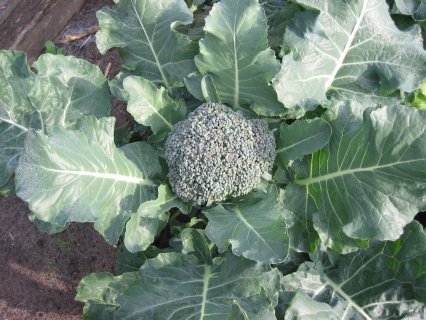Fall Planting Guide for the NC Piedmont Region
 Thursday, July 18, 2013 at 7:36AM
Thursday, July 18, 2013 at 7:36AM Have the summer heat and insects already got you dreaming about growing cool season Brassica family crops like Brussels sprouts and broccoli? Remember that while these and other popular ‘Fall’ cultivars like collard greens, kohlrabi, cabbage and kale do thrive in cooler weather, they must be planted in mid to late summer here in the NC piedmont, in order to successfully yield in the autumn months.

Brussels sprouts, for example, need 100-120 days to fully develop, and must be started mid-summer in order to be ready to harvest in late October or November.
Much of the reason for starting these varieties (as well as root vegetables and even some leafy green varieties) in some of the hottest months of the year has less to do with temperature, and more about daylight. Cultivars that need several months to develop, like cabbage and cauliflower, must be established when the days are long In order to achieve the necessary amount of vegetative growth before the cooler nights, and shorter days ahead where growth slows down significantly.
But a broccoli or Brussels sprout planted in September would still grow, right? Sure, they would grow some in size, but actual yields of broccoli florets or Brussels sprouts would be disappointing because the shorter days in November and December would prevent the plant from fully developing until next spring, if at all.
The planting guides below are specific to North Carolina, but note that unless where specified on the Wyatt Quarles guide, the recommended planting dates in the Wyatt Quarles and NC State Extension office are for direct sowing seed. Many of the suggested cultivars in the Wyatt Quarles and NC State guides are not open pollinated or heirrloom varieties, and if you're interested in saving seed, or simply want to grow heirloom varieties, check out the seed catalogs at Southern Exposure Seed Exchange or Sow True Seed - both of which have heirloom cultivars that are well adapted to the mid atlantic region.
The dates in our own fall planting guide, shown at the top of the list, are for transplants, unless specified as direct seed.

July 15 - August 15
Broccoli
Brussels sprouts
Cauliflower
Cabbage
August 1 – Sept 1
Kale
Kohlrabi
Collard Greens
Chinese cabbage
Beets
Leeks
Lettuces
Onion Sets
Radish (seed)
Rutabaga (seed)
Carrot (seed)
Turnip (seed)
Sept 1 - Oct 1
Beets
Lettuces
Spinach
Kale
Mustard Greens
Oct 1 - Nov 1
Lettuces
Spinach







